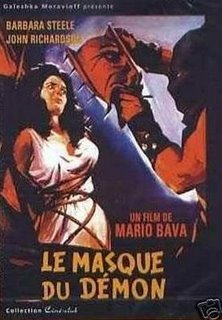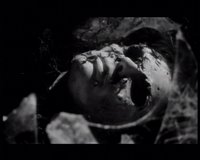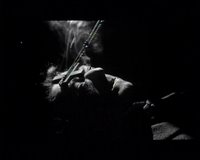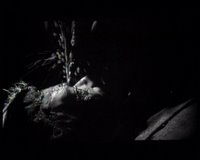 Director: Mario Bava
Director: Mario Bava
Release Date: 1960
Contains spoilers
Black Sunday, or as it is also known Mask of the Demon, was based on the short story “Viy” by Gogol. However there is not much similarity between this film and the later film based on the same story, Viy (1967). There are several things to note regarding this movie before we look at the plot and the, rather unique, vampire elements.
Firstly, you’ll note that the DVD cover I have posted is in French. This is because my edition of the movie is the French release. You should also be aware that this film was actually banned in its native Italy. Though the film is perhaps not that excessive by today’s standards it is actually possible to see why. I will go on the record, at this early stage, to say that this is a marvellous, atmospheric film. In fact you’ll have to go a long way to find a more perfect example of gothic cinema. The dialogue can tend towards the melodramatic, but that probably has a lot to do with the dubbing and, somehow, this only seems to add to the atmosphere. In fact, when Tim Burton listed the film, in the October 17-23 1998 TV Guide, as his favourite horror movie you know you are in for a treat.
The rules around vampirism are somewhat different to a standard piece of vampire cinema and we will look into that later.
The film starts by us being told that “before the age of reason, Satanic beings appeared across the world lusting for blood so as to deny death.” We see the inquisition - they have two captives. Javutich (Arturo Dominici) has been dealt with it seems but his lover (and in the Italian language version his sister) Asa (Barbara Steele) still faces the wrath of the inquisition. She is accused of witchcraft and they brand her with the mark of a witch. The mask of Satan, a grotesque Devil mask with huge nails inside, is then hammered to her face. She is taken to be purified in flame and curses her family line, the inquisitor is her brother also, saying that she will have her revenge through the blood of his sons and theirs. The burning fails, however, as a storm erupts and douses the flames. She is then entombed and Javutich is buried in unconsecrated ground.
Two hundred years pass, and a Doctor, Dr Kruvajan (Andrea Checchi), and his student, Dr Andre Gorobec (John Richardson), are travelling through the land to a conference. They get the coachman to take a short cut through the forest, a place where an eerie wailing can be heard. The coach throws a wheel and, whilst the coachman repairs it, they investigate the wailing, which seems to be louder and coming from an abandoned chapel. The wailing is nothing more than the wind whistling through broken organ pipes but they then investigate the crypt and Kruvajan recognises it as the final resting place of the witch.
It is here that we find one of our first unique take on vampire lore. Asa is interred in a stone sarcophagus with a window over the face. Above the window is a stone cross, designed so that her corpse can see the cross through the window and it will hold her in place. Eventually Kruvajan is left alone in the crypt and is attacked by a monstrously giant bat. He shoots the bat and then whacks it with his walking stick, in the process smashing the window of the sarcophagus and breaking the cross.  When Andre checks on him they rummage through the contents of the sarcophagus, removing a holy icon. Kruvajan also removes the mask revealing a face that is still intact, although the eyes are empty and swarming with insects. Unfortunately he cuts his hand on a shard of glass and we see the blood drip into her eye socket. In a series of wonderfully macabre cut scenes, later, we see the blood in the eye boil and then the eyes reform.
When Andre checks on him they rummage through the contents of the sarcophagus, removing a holy icon. Kruvajan also removes the mask revealing a face that is still intact, although the eyes are empty and swarming with insects. Unfortunately he cuts his hand on a shard of glass and we see the blood drip into her eye socket. In a series of wonderfully macabre cut scenes, later, we see the blood in the eye boil and then the eyes reform.
When they leave the crypt they bump into the Princess Katia (Barbara Steele) who is investigating the shot that has been fired. Later we see Katia at home with her brother Constantine (Enrico Olivieri) and father Vajda (Ivo Garrani). We discover that it is the Feast of St George, exactly 200 years since Asa was killed. We also discover that 100 years ago, exactly, there was an earthquake that split the tomb of Asa and, as a result, another Princess who, like Katia, was the exact image of Asa died.
 That night Asa summons her dead lover from his grave, which is about as far as I want to go plot wise, though there are still spoilers ahead because I want to examine some of the vampire lore contained in the film.
That night Asa summons her dead lover from his grave, which is about as far as I want to go plot wise, though there are still spoilers ahead because I want to examine some of the vampire lore contained in the film.
The vampires themselves do not have fangs. Bava had fangs made but decided against them, so Steele and Dominici can be seen with them in some of the publicity shots. The vampires are scared of religious artefacts and indeed placing them upon the skin burns.  What was effective in the scene where this occurs was the close quarter camera and the smoke that raised from the flesh.
What was effective in the scene where this occurs was the close quarter camera and the smoke that raised from the flesh.
To die by the vampire means to rise as a vampire and their activity is restricted to night. It appears, as a grave is opened in the daylight, that sunlight does not destroy them but they are as the dead during the hours of light.
They are primarily blood drinkers but Asa also acts as a psychic vampire, draining the life energy directly from her double.
Most interesting is the way in which vampires can be killed. Though we do see a vampire die through fire the main method employed is to pierce the left eye with a pin or shard of wood.  This is interesting as, to my knowledge, this is the only film that employs such a specific method and the method itself ties in with the concept of the evil eye. Given that Asa is a witch as well as a vampire this is fitting and rests well with the concept of the strigoï vii (a living witch type vampire) and the strigoï mort (the undead variety, which the vii becomes after death). The graphic scene where eye fluid explodes from the burst eyeball makes it easy to understand why the film was banned in Italy back in 1960.
This is interesting as, to my knowledge, this is the only film that employs such a specific method and the method itself ties in with the concept of the evil eye. Given that Asa is a witch as well as a vampire this is fitting and rests well with the concept of the strigoï vii (a living witch type vampire) and the strigoï mort (the undead variety, which the vii becomes after death). The graphic scene where eye fluid explodes from the burst eyeball makes it easy to understand why the film was banned in Italy back in 1960.
The film is an atmospheric masterpiece and a visual treat. I recently reported that it is to be remade and whilst the idea is both interesting and exciting, one wonders how it will fair without Barbara Steele. Whilst not necessarily the beauty that the script suggests she was certainly a most striking woman but it is her sheer presence, which absolutely fills the screen, that will be difficult to replicate.
This film deserves a great 9 out of 10.
The imdb page is here.
Tuesday, August 15, 2006
Black Sunday - review
Posted by
Taliesin_ttlg
at
10:51 AM
![]()
Labels: undead, vampire, witch/vampire
Subscribe to:
Post Comments (Atom)
















11 comments:
This film has already been remade before - by Lamberto Bava, Mario's son.
La Maschera del demonio was released in 1989, and departs from the original film in many regards. Not the least in quality.
Here's its IMDb entry.
I admittedly haven't heard about the remake you're referring to (which seems more current), but doesn't surprise me that such a work is in process.
Remake Fever has truly gripped the horror world.
Anthony, I have heard of the 1989 remake, but as yet have not seen it.
My post on the modern remake is here, though I have to admit I have heard nothing since I picked up that tit-bit. Perhaps the idea has gone done the tubes. Things have also become very silent in respect of the Viy remake that was on the cards.
Poor Asa! Well, in the beginning of the film, not later. Atmospheric and very effective.
Hi Christine - I have to admit, one of my favourite movies.
HI. I think this and Horrible secret of Dr Hitchcock, another Barbara Steele film, are best Italian horror films ever made. I have not seen remake, but I have heard it´s much weaker.
Hiyah Christine, I can't disagree when it comes to this but I thought Raptus (to give Hitchcock its other name) was a tad slow - personal preferences of course.
A masterpiece. I saw it only when I bought it but I think it's time for a second viewing! So much atmosphere... Great cinema
The T, one I think to ensure gets rotated into the player on a regular basis.
Dig it out and enjoy again! :)
I have the seen the remake by Bava Jr. and actually quite liked it. It differs in many aspects from the original, being somewhat closer to the story by Gogol, which also means that it does not have any vampiric elements. What it does have is a great atmospheare of a gothic, almost surreal fairy-tale atmosphere in its own right without imitating the original. Although it has some flaws I would still recommend it it as a highly underrated example of late italian gothic filmmaking.
Hi Nerdy Willow Tree, good to hear from you. I have actually looked at it here.
It was looked at as a honourable mention as it really did strip the vampire elements out and I didn't overly rate it myself - though it is interesting as a later piece of Italian gothic film-making, as you mention.
Hi Taliesin, thankyou for the link, I didn't know that you had already written about the film (and that I used words twice in single sentences).
Post a Comment